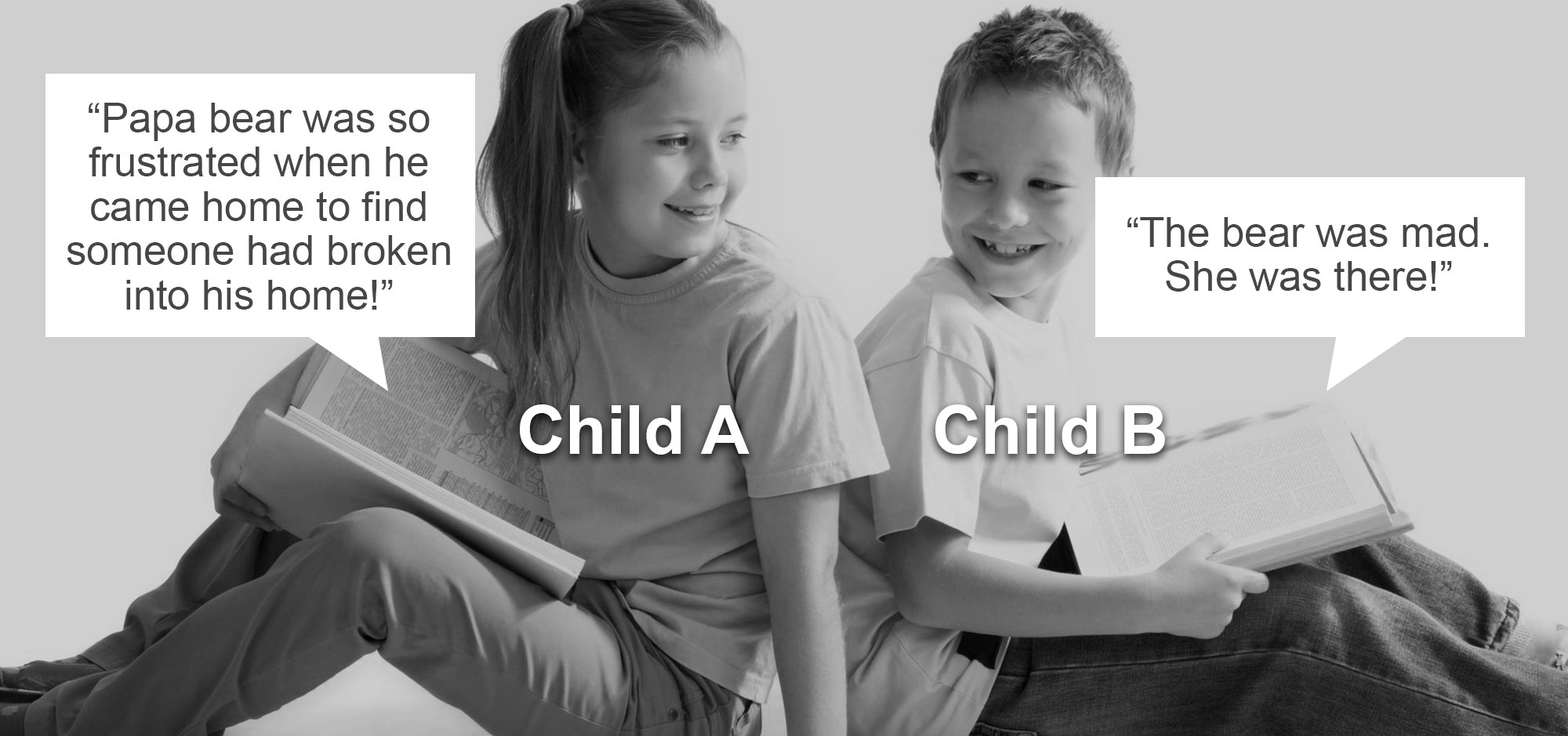Let’s take a look at two sample sentences from Kindergarten students:

Who do you predict will be the better reader by 3rd grade? Child A uses higher level vocabulary (frustrated, someone, home), more complex sentence structure (to find someone had…), and is more specific and clear.
There’s abundant research to show that children who enter Kindergarten with more developed language skills (like Child A) learn how to read more easily.
What contributes to differences in language development?
A well-known study by Hart and Risley1, professors at the University of Kansas, looked at the relationship between a baby’s language experience in the home environment and language development. They found that there was a strong relationship between language experience, vocabulary development, and socioeconomic status (SES).
 The researchers began by looking at language exposure of children 7 to 9 months of age. All language experiences with the children were recorded, transcribed, and analyzed during monthly one-hour recordings for about two and a half years. As you can see, the study shows a 32 million word difference between the children of professional families and those from welfare families.
The researchers began by looking at language exposure of children 7 to 9 months of age. All language experiences with the children were recorded, transcribed, and analyzed during monthly one-hour recordings for about two and a half years. As you can see, the study shows a 32 million word difference between the children of professional families and those from welfare families.
When you consider that language experience and vocabulary development are a major part of the brain’s toolkit for representing, manipulating, and retaining information in learning to read, these highly varied differences present a daunting challenge for educators in the classroom.
How do these differences in language experience impact students when they begin school?
On the graph below2 we can see the effect that weakness in oral language development has on students learning to read.
Over time, small differences in oral language skill of 5 and 6 year olds grow into a significant reading gap by the time students are in middle school.
The weak language foundation manifests into a huge literacy gap.

Fast ForWord reverses the trend!
Fast ForWord was designed specifically to address the underlying language, reading, and cognitive skills that constitute the foundation of all learning. Aligned with a good curriculum and a language rich environment, Fast ForWord can create an optimal foundation to help every child achieve their learning potential.
More resources:
See specific results with At-Risk/Title I students.
1. Meaningful Differences in the Everyday Experience of Young American Children by Betty Hart & Todd R. Risley. Paul H. Brookes Publishing Co. (1995).
2. The Effects of Weaknesses in Oral Language on Reading Growth (Hirsch, 1996)



